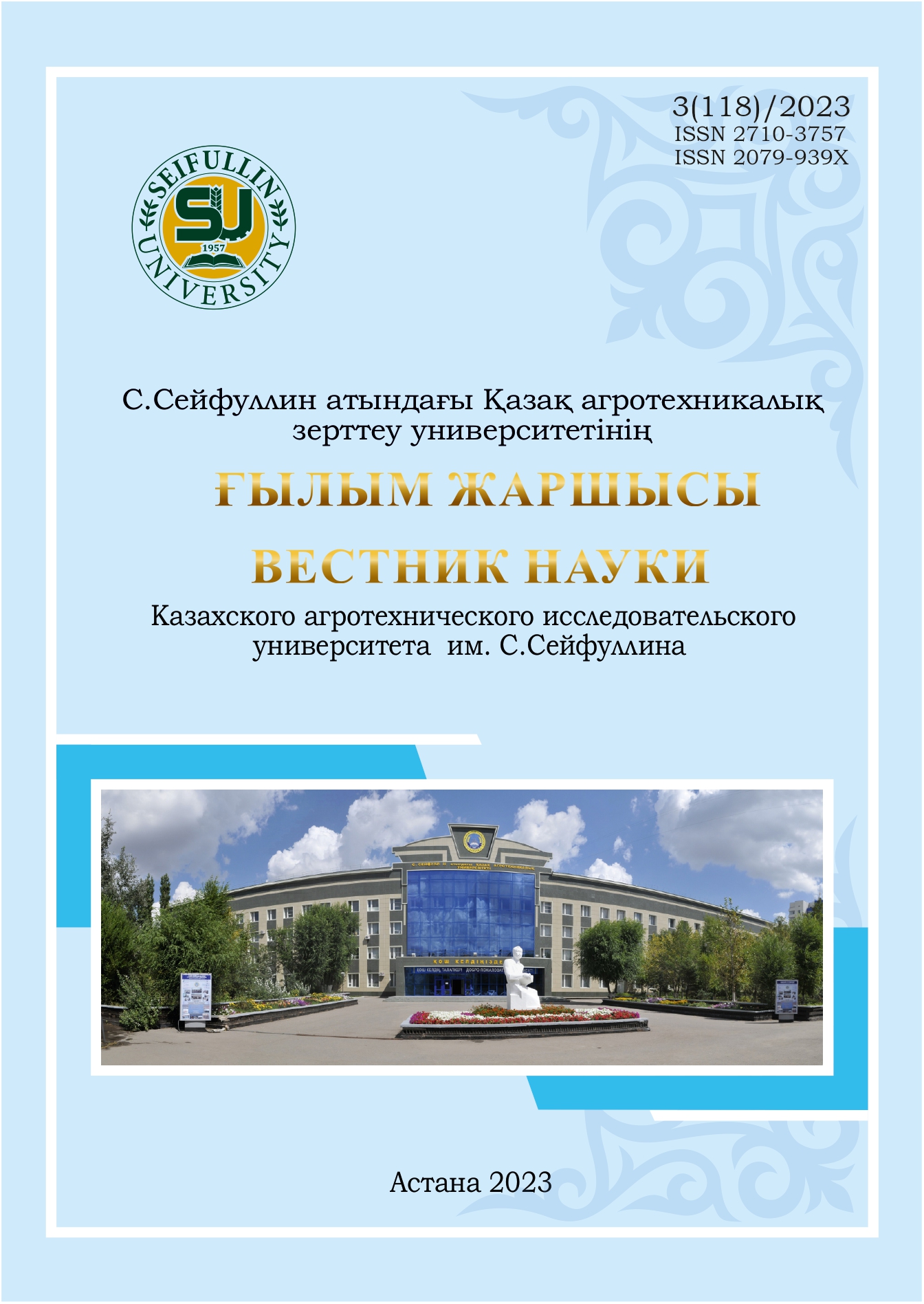AGE VARIABILITY OF QUANTITATIVE AND QUALITATIVE INDICATORS OF MEAT PRODUCTIVITY IN KALMYKIAN CASTRATES OF DIFFERENT BREEDING LINES
DOI:
https://doi.org/10.51452/kazatu.2023.3(118).1464Keywords:
Kalmyk breed; castrate bulls; factory line; meat productivity; amino acid composition; meat quality; slaughterAbstract
The priority of improving the productivity potential of the Kalmyk breed for beef cattle breeding in general is explained by its significant population in the post-Soviet area. The direction of selection and breeding work with the breed was reoriented to increase longevity and reduce the intensity of fat accumulation in carcasses, which is associated with the introduction of resource-saving technology in the industry. In order to identify the most promising genotype of Kalmyk cattle,
quantitative and qualitative indicators of meat productivity of castrates in the age aspect were evaluated. From bulls after castration and weaning 2 groups were
formed: I group - representatives of the breeder line Stroiny 2520, II group -continuers of the breeder line Sailor 120541. Meat productivity was studied on the
basis of control slaughtering data, conducted at 15 and 18 months of age, 3 heads from each group. Amino acid composition of the longest muscle of the back was
determined by capillary electrophoresis. Regardless of the slaughtering stage, more massive carcasses (by 2.0-2.9%) were obtained from the progeny of the Moryak
breeding line. The longevity of representatives of the studied breeder lines is confirmed by the increase in carcass weight by 28.8-30.0 kg and its yield by 0.3-
0.5% by the second stage of the control slaughter. In terms of the total content of essential AA (at 18 months of age) there was an advantage of castrates of group II
by 4.9%, which increased in comparison with the previous stage of control slaughter (at 15 months of age) by 0.2%. In turn, the progeny of the Slender bull was characterized by more intensive fat accumulation, which was expressed in increased weight and yield of internal raw fat. For the first time the data on age variability of quantitative and qualitative indicators of meat productivity in young
Kalmyk breed of different breeding lines in relation to the dry-steppe zone of the Republic of Kazakhstan were obtained. The results of complex analysis allowed to
reveal the most promising genotype characterized by a preferential accumulation of muscle tissue with optimal amino acid composition.

